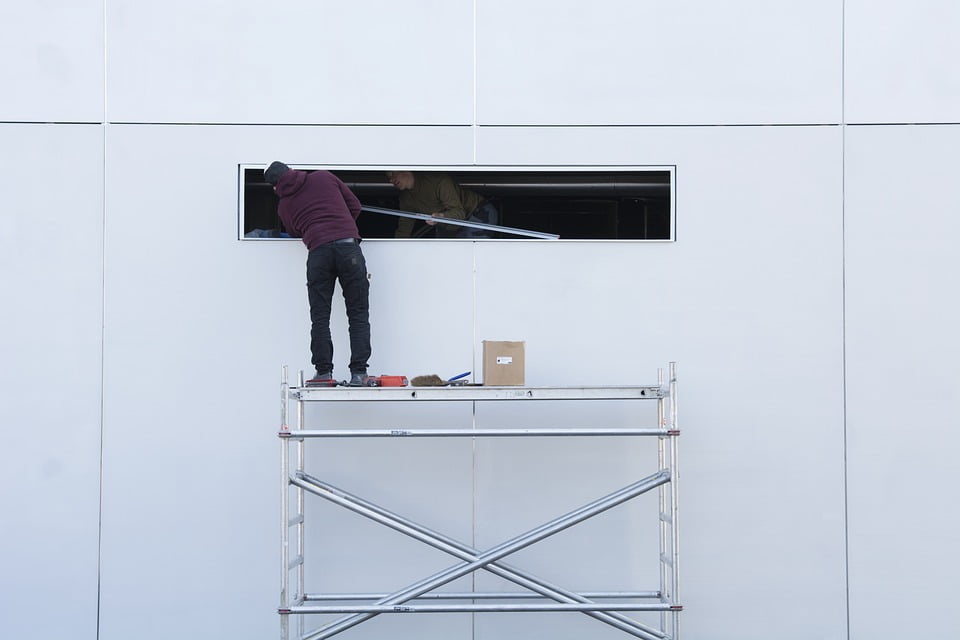Maybe you’re a DIY enthusiast or you regularly work at height in the course of your job, but how much do you really know about working at height? In this blog, we’re going to answer some of your most burning questions.
What does working at height actually mean?
Working at height means that you:
Work above ground level
You could fall from an edge or through a fragile surface
You could fall into an opening in a floor or a hole in the ground
It does not include falling down a staircase
How do I comply with the Working at Height Regulations?
The Work at Height Regulations 2005 apply to all working at height, where there is a risk of falling and injury. The legislation gives employers, facilities managers, and building owners duties that they must abide by. This includes:
Planning and organising work at height properly
Ensuring all employees who work at height are competent
That all work at height is risk-assessed and the right equipment is used (as well as inspected and maintained)
How do I know if the ladder I’m using is right for Working at Height?
Generally, if the job you’re doing is going to require you to be up the ladder for over 30 minutes, other equipment should be considered. Use a ladder only if it’s safe to do so (it can be secured and is level and stable).
What is a working platform?
The Work at Height Regulations 2005 states that a working platform is any surface from which you can work. So it could include:
- a roof
- a floor
- a scaffold
- a mobile elevating work platform
- a stepladder
What do I need to know if I’m buying a scaffolding tower?
The first thing is that you should be competent and confident that you can build, inspect, use, and properly dismantle a tower.
When you’re buying a tower, make sure it comes with all of these safety features:
- Purpose-built platforms with trapdoor entry and exit
- You should keep at least 2 metres between each one
- There should be guardrails around every platform, which should stand at a minimum height of 950mm
- There should be a built-in access ladder or steps so workers can safely get up and down the tower
- It should have stabilisers
- There should be toe boards to prevent materials from falling
How do I assemble and dismantle a scaffolding tower?
There are two methods you can use:
The Advance Guardrail (AGR) method
Guardrail side frames are put in place BEFORE anyone sets foot on the platform. They are fixed from ground level for the first platform level and from a platform below for all higher levels.
The Through The Trap (3T) method
The guardrails are put in place before stepping onto the platform. The operator sits on the platform, within the open trap door and installs/removes the guardrails.
When must a scaffolding tower be inspected?
The tower should be inspected before it’s used, and at regular intervals after that. It should also be inspected if an incident happens which makes you suspect that it’s unsafe.
How do you know if someone is competent for working at height?
Workers should have the skills, knowledge, and experience to complete work tasks safely, and if they are trainees, they should be supervised by a competent person.
If tasks have been assessed as low risk, it might be enough to just teach a worker on how to use the ladder safely and give them basic training, but when the job is higher risk, or it simply requires more knowledge and skill, workers should be trained and certified by relevant trade or industry associations.
Do you regularly work at height, or are you responsible for workers that do? Then you’ll find everything you need in our range to ensure that you and your employees can do the jobs you need to do safely while complying with health and safety law.
In the Safety Steps range, you’ll find everything from office steps, to step ladders, work platforms, towers, and more.
Our products are suitable for home and work use, and are perfect for schools, warehouses, building sites, and many more locations. In addition, many of our products are British made as we enjoy supporting British business, but no matter where the items come from, we promise they will be of the highest quality.
Don’t know what equipment you need for the job? No problem, we can help!
Contact us on 01684 252212 or at [email protected] to find your perfect safety steps!




